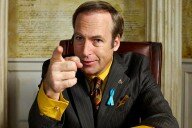This is a guest post by TampaBayScene’s Dasha Lee Rodriguez
Long gone are the days when a woman had to depend on an immense amount of luck to marry up in the world (I’m looking at you, Cinderella), or just lay around in wait for a charming prince to come along and plant one on her to get her happy ending (that’s right, Sleeping Beauty).
Naturally, Disney and their damsel-in-distress princesses had to get with the program, or risk losing the lure of princess play for little girls. We live in a world where little girls are now tougher, more outspoken and, apparently, more demanding.
The first batch of princess movies, “Snow White” (1937), “Cinderella” (1950) and “Sleeping Beauty” (1959), featured princesses of the dry toast variety. They had very little personality, were painfully soft spoken and were all saved by their true loves’ kiss and/or charming princes because some evil, bitter bitch just had to hate. Poor Snow and Aurora spend the climax of their own movies knocked out, vulnerable, just waiting to be saved. Lesson learned: Marry up or play dead.

Via: filmsquish.com
There was a dry spell of Disney princess movies from 1960-1989 so, unfortunately, little girls only had the first batch of doe-eyed princesses to turn to for guidance.
Luckily there was another batch of princess movies to come: “Little Mermaid” (1989), “Beauty and the Beast” (1991), “Aladdin” (1992), “Pocahontas” (1998) and “Mulan” (1998). When I was a kid I envisioned myself as a Belle/Jasmine hybrid of a princess, only Aladdin was my boyfriend. Although these princesses spent a big chunk of the films also pining over a prince, they don’t come close to the dull nature of the first batch of princesses who just sat back and accepted the so-called “fate” they were handed without a fight. (Slow progress is still progress.)
The stories of these princesses are much more developed and evolved. They want to be heard, they finally have something to say, they are not afraid to confront their enemies and they are, at least, rejecting the idea of being helpless.

Via: disneystoryoriginspodcast.com
The most recent batch of princesses, however, are by far the most progressive bunch of them all. Although there was a bit of a dry spell between princesses of the late 80s and 90s, it was well worth the wait. “Princess and the Frog” (2009), “Tangled” (2010), “Brave” (2012) and “Frozen” (2013) all feature princesses that break the typical Disney mold (Although not all can be broken, each princess focuses on a different princess stereotypes built over time to break.)
Princess Tiana, of “Princess and the Frog,” is the first princess to actually work hard for her role as a princess rather than just stumbling upon the position through marriage, proving to little girls that women can and should work hard for the things they dream to be.
Princess Rapunzel (“Tangled”) decides her own fate by using Flinn to guide her journey and escape. She ends up saving his life, proving we are in control of our destiny, potential saviors of others who are in need and do not have to be damsels in distress.
Princess Merida, of “Brave,” refuses the girly princess role altogether and is much more of an outdoorsy, adventurous type with no love interest aside from that of her deceased mother, a love which is refreshing to be portrayed.

Via: feministfiction.com
The latest and most talked about princess is Elsa, who quickly becomes Queen Elsa. She and her sister Princess Ana are the first to take bullshit themes in past princess films head-on by poking fun at them directly. For instance, Elsa shoots down Ana when she comes prancing over, excitedly discussing her plan to marry a charming prince. Elsa’s reply? “You can’t marry a man you just met.” This totally breaks the whole “love at first sight” ideal that Disney has been spoon-feeding us for years. In the end the only thing that can heal Ana is true love. Naturally she runs to find the man she loves only to find out that, a) he’s an evil prick that won’t save her because he wants her kingdom and b) the only true love to heal Ana is her sacrifice for her sister as an act of true love. Enter the water works.
Although Disney may still have many critics and critiques, at least it’s making visible shifts from the outdated ideals its previous fairytales churned out. The studio is becoming more progressive, creating empowering female roles that all little girls could look up to in our modern society of gender equality. We can only hope to see a princess in the future that strives to accomplishing self-fulfilling goals independent of a love interest. In fact, the ideal Disney princess of our near future will be something other than a size two, have a stint with PETA and Greenpeace, be the CEO of a Fortune 500 company, a consultant to the United Nations and a kick-ass mom and wife when the day is over.
The possibilities are endless.
Featured photo courtesy of: eonline.com





